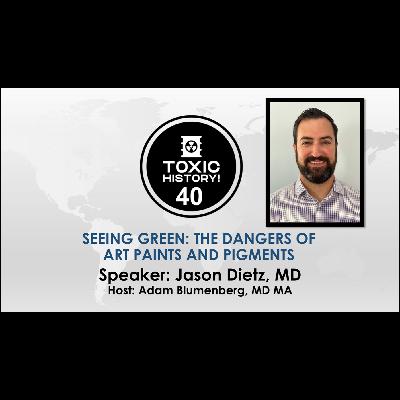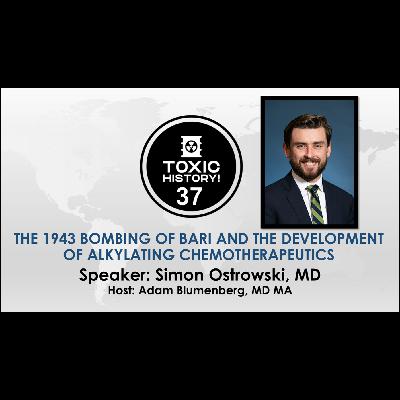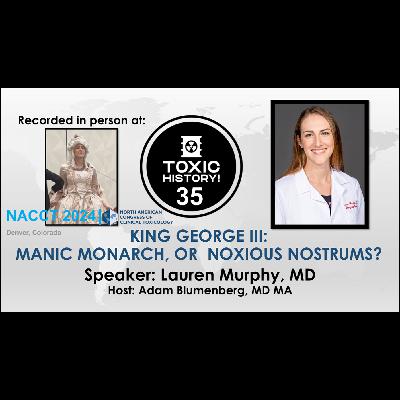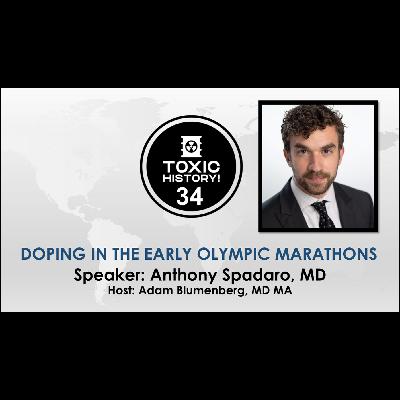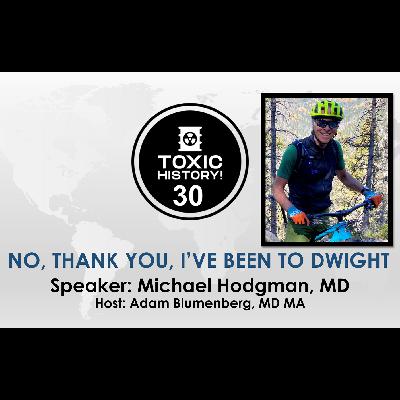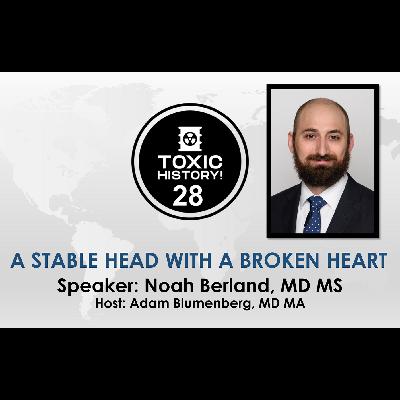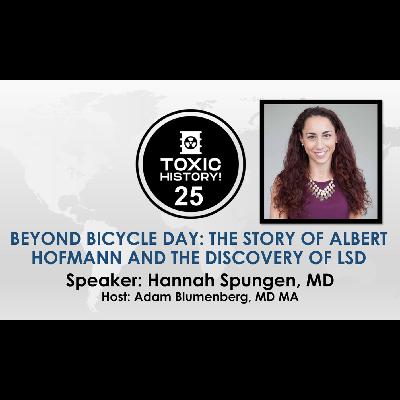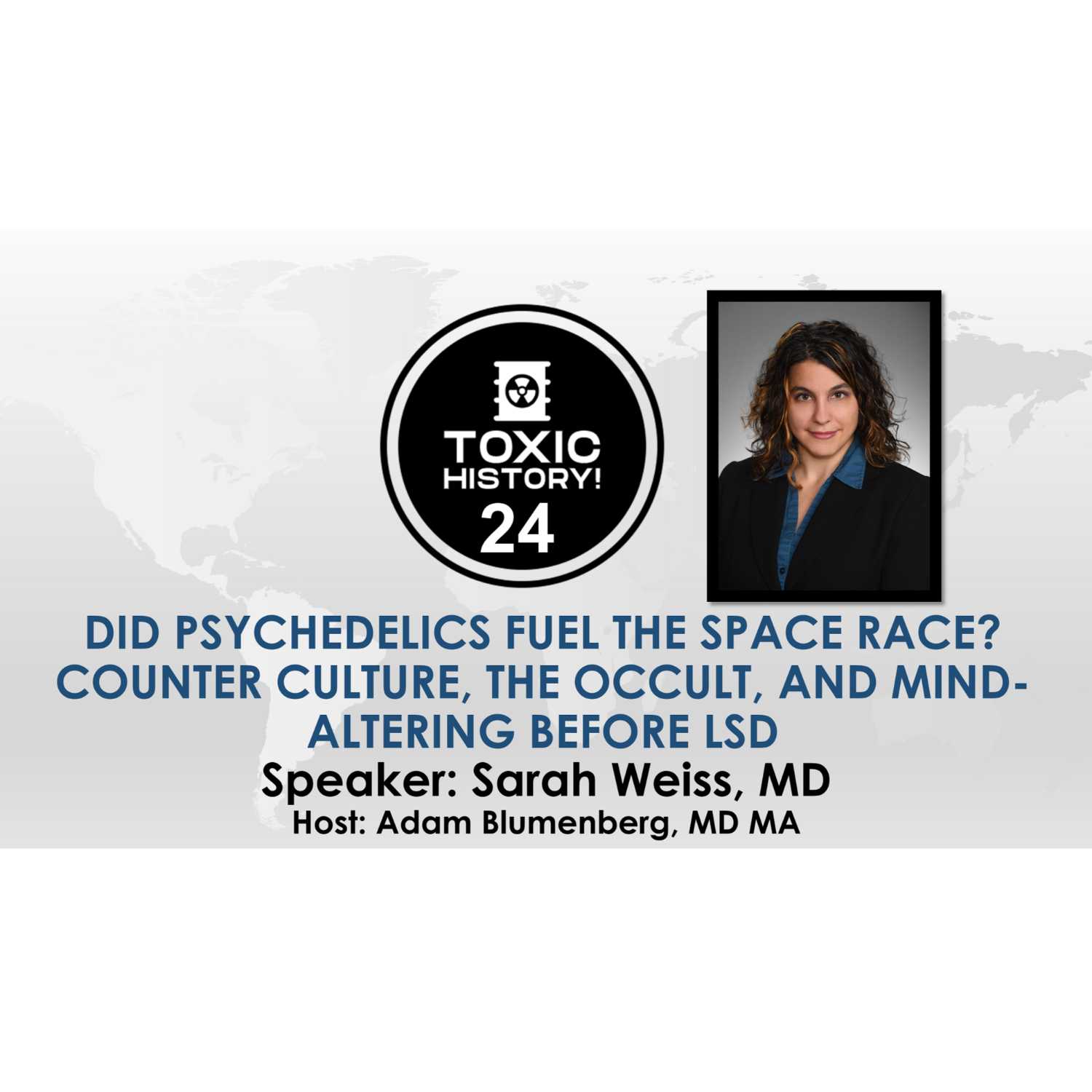Discover Toxic History!
Toxic History!

Toxic History!
Author: Adam Blumenberg
Subscribed: 15Played: 48Subscribe
Share
© Adam Blumenberg 2022
Description
Toxic History! is a narrative medicine lecture series where medical experts tell you stories from the history of poison. Human beings have known about poison – substances that harm and even kill– for thousands of years. Poisons have been seen as mysterious, supernatural, and enigmatic. What are these plants, mixtures, and elements with such powerful properties? It is only in the past century that science has begun to demystify these chemicals and explain how they work. Still, the impact they have on the world – from cultish mass suicides to chemical attacks to a single case of homicide – can be profound. Toxic History! explores the impact on society, culture, and science behind poisonous events in history.
43 Episodes
Reverse
Methylene blue is a vividly blue dye that holds the distinction of being the first fully synthetic medication to be given to human beings, and played a major part in the scientific advances of the late 19th century. Its almost unnatural hue belies its modern use as a life-saving antidote to methemoglobinemia.
Apples have been associated being forbidden fruit and source of nefarious poisonings all throughout folklore. This presentation delves into whether there is any historical legitimacy to these tales, and if we have anything to fear when it comes to an apple a day.
Join us as we discuss the history of the radium craze in the early 1900s and how its early popularity led to the tragic demise of many young women who worked as radium dial painters. Their story helped establish the field of medical physics and led to important legislation aimed at the protection of the health and safety of workers.
The goal of bringing the full color spectrum onto the canvas is important to artists but many of the early compounds had significant toxicity. The talk will discuss the adverse effects from some of the heavy metals found in early pigments.
Arsenic, known since antiquity as the ‘king of poisons’, gained infamy among nobility and the bourgeoisie as a public menace. Synonymous with crimes of ‘fashion’, arsenic poisoning was the silent killer and a nearly untraceable means of murder. It wasn’t until early 19th century France that the poudre de succession met its match, ushering in a revolution in forensic toxicology with the ‘chief terror of poisoners’.
This presentation delves into the toxicological roots of the infamous Witch Trials and other historical confessions of witchcraft and lycanthropy. Discover how the use of plants like belladonna and datura contributed to vivid hallucinations, leading individuals to believe in supernatural experiences, all while unaware that they were under the influence of potent deliriants.
The German bombing of Bari, Italy in December 1943 had disastrous consequences for the Allies. Learn more about the mysterious cargo in the port that day, the Allied cover-up that followed, and the diligent detective work that contributed to the discovery of modern cancer therapy.
Construction of the Hawks Nest Tunnel was one of the worst occupational disasters in American history. Its construction resulted in large numbers of casualties, both acute and chronic, secondary to silicosis and other occupational related illnesses.
Explore the medical history of King George III, a monarch whose reign was marked by brilliance, chaos, and the shadow of madness. This toxicological exploration unveils the personal struggles behind the politics, from the medical records of his time to contemporary interpretations and possibilities.
There has been doping in sport throughout modern times, but before the steroid era athletes used different agents to enhance their performance. Learn about how strychnine use in the 1904 and 1908 Olympic marathons may have propelled runners to victory.
In 1983 patients began presenting with sudden onset Parkinsonian symptoms after using a new designer drug. Dr. Langston eventually was able to link the cases to exposure to the contaminant MPTP, and the future of Parkinson’s research was forever changed as a result.
Rice, a staple food for a large portion of the world population, has been documented to have been cultivated, grown, and consumed for thousands of years. For those living around the Jinzu river in Toyama Prefecture in Japan in the early 1900s, rice and water consumption caused a pollution disease called “Itai-Itai disease”. Bone and join pains and kidney disease were ever increasing around this region of Japan, and it wasn’t until the 1950s that cadmium was suspected as the primary culprit.
Throughout history, women have sought to control their fertility with substances that “regulate” menstruation, terminate pregnancies, or induce labor. Teas, concoctions, and medicinal compounds containing pennyroyal, rue, artemsia, ergot, cohosh, quinine, and lead have caused significant toxicity and death when taken as abortifacients. In this talk we will explore the history of abortifacients from antiquity through modern times, and discuss cases of toxicity through the lens of the women who have utilized these remedies.
This is the story of Dr. Leslie Keeley and his gold cure elixir. His Keeley Institute in a small midwestern town was perhaps the most widely recognized alcohol treatment program in the United States in the 1890s. Although his elixir may have been no more than snake oil his treatment program foreshadowed treatment as we know it today.
State-sponsored poisoning and assassination is deeply ingrained in Russian politics. You’ve heard of Alexander Litvinenko, but where was the poison and delivery plan developed? And who were the other victims of Moscow’s poison laboratory?
Drinkers asked for a bigger and more stable head and the brewers came up with a novel solution. The heaviest drinkers that couldn’t even afford a cup to pour their beer into and see a head started to mysteriously die of heart failure. An investigation begins!
As one of the largest man made disasters in public health history, the discovery and realization of the disastrous effects of thalidomide in pregnant patients has paved a way to safe medication discovery and utilization. From this tragedy in modern medicine led new regulatory pathways, transparency in drug development, and expanded procedures to ensure therapeutic medication supply is not only effective, but safe.
Our long history of attempting to find a treatment for botulism is a winding road of discovery, setbacks, and the constant challenge of balancing risk and benefit. Through major outbreaks that seized the nation’s attention and the disruption of major wars, however, the spirit of science and humanity prevailed, bringing us a therapy to help us in our ongoing fight.
This talk will describe the early career of Albert Hofmann, his accidental discovery of the hallucinogenic properties of LSD-25, his legendary bicycle ride home from work during an LSD trip, and the legacy of his discovery.
The discovery of LSD and the subsequent psychedelic renaissance of the mid-20th century hold ample space in history books, but Albert Hofmann didn’t discover the first mind-altering chemical. At the turn of the 20th century, natural psychedelics’ ancient power crossed continents to shape both cultural and technological development.





